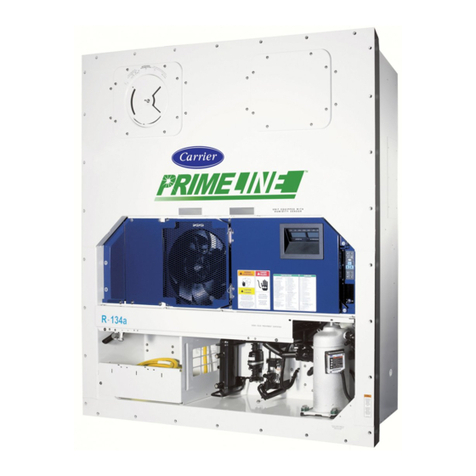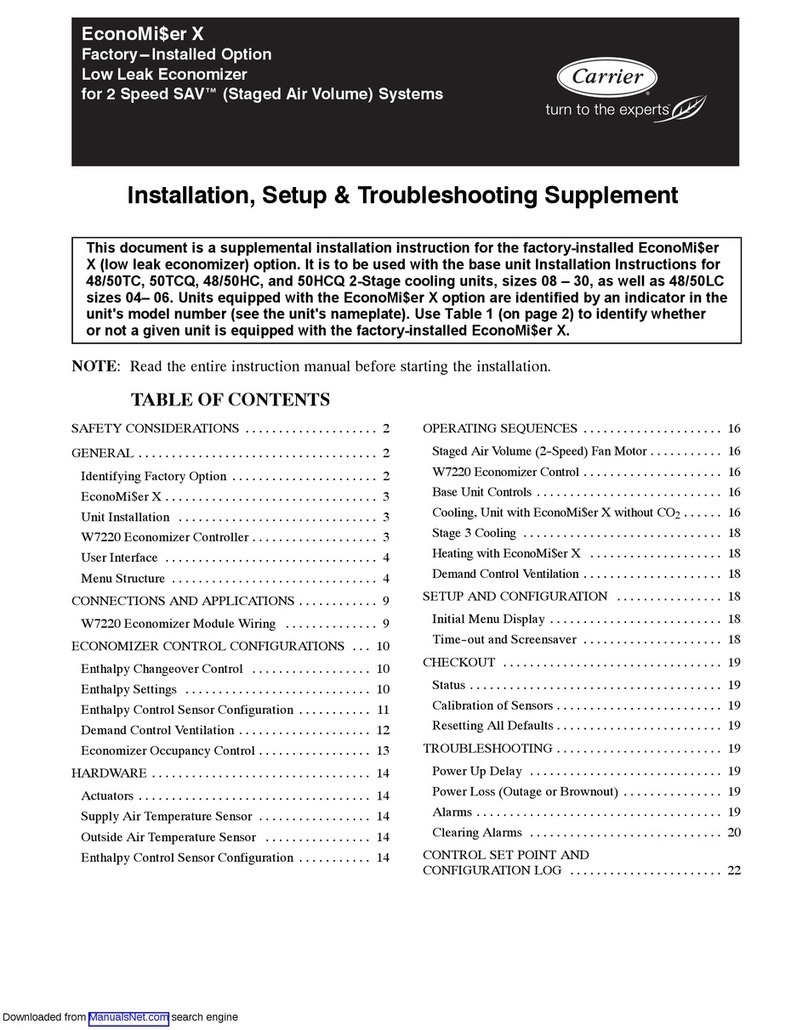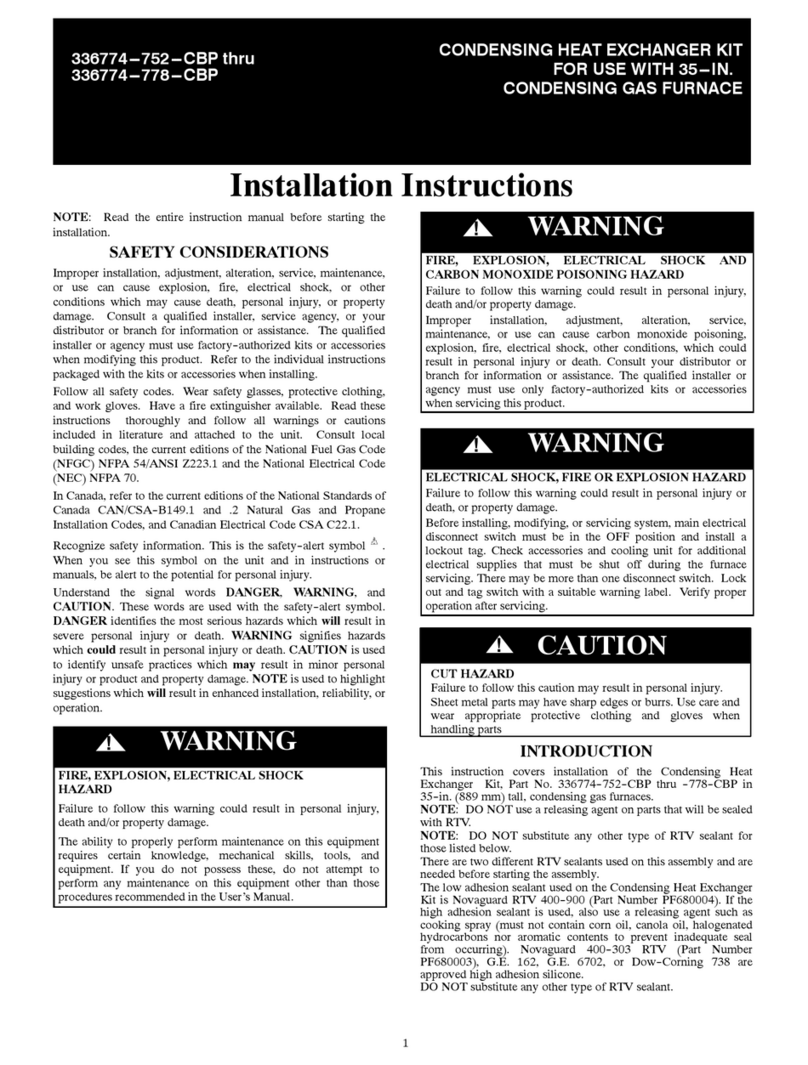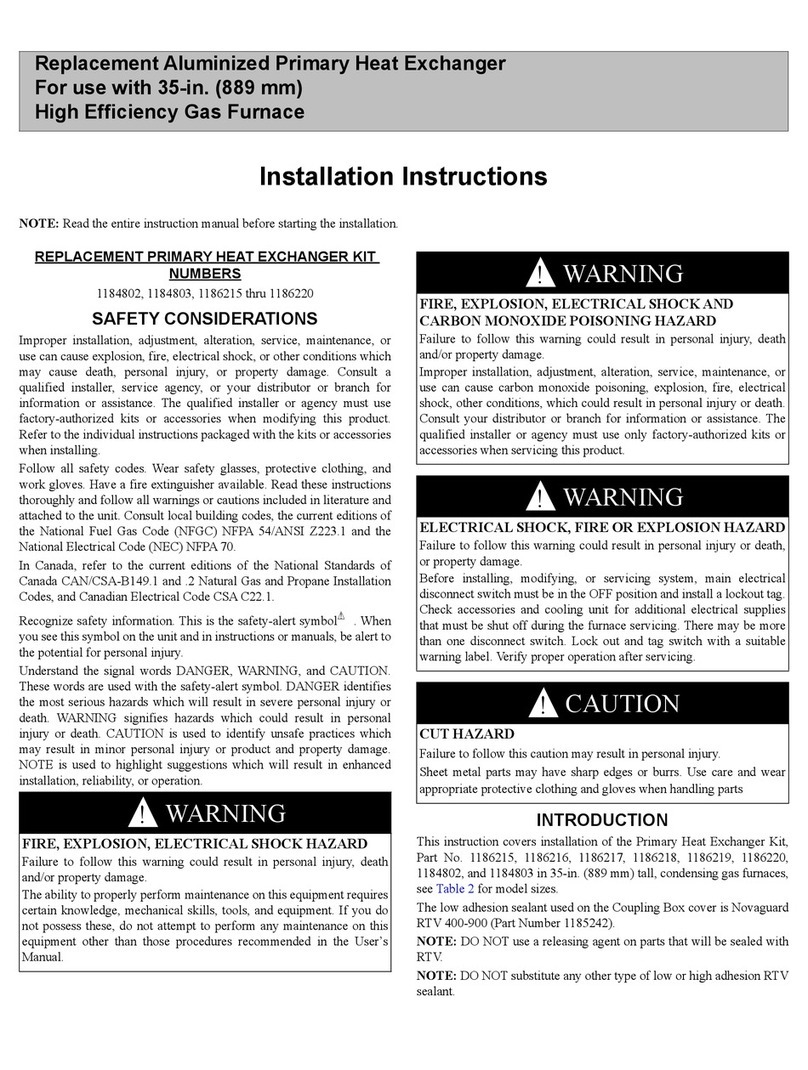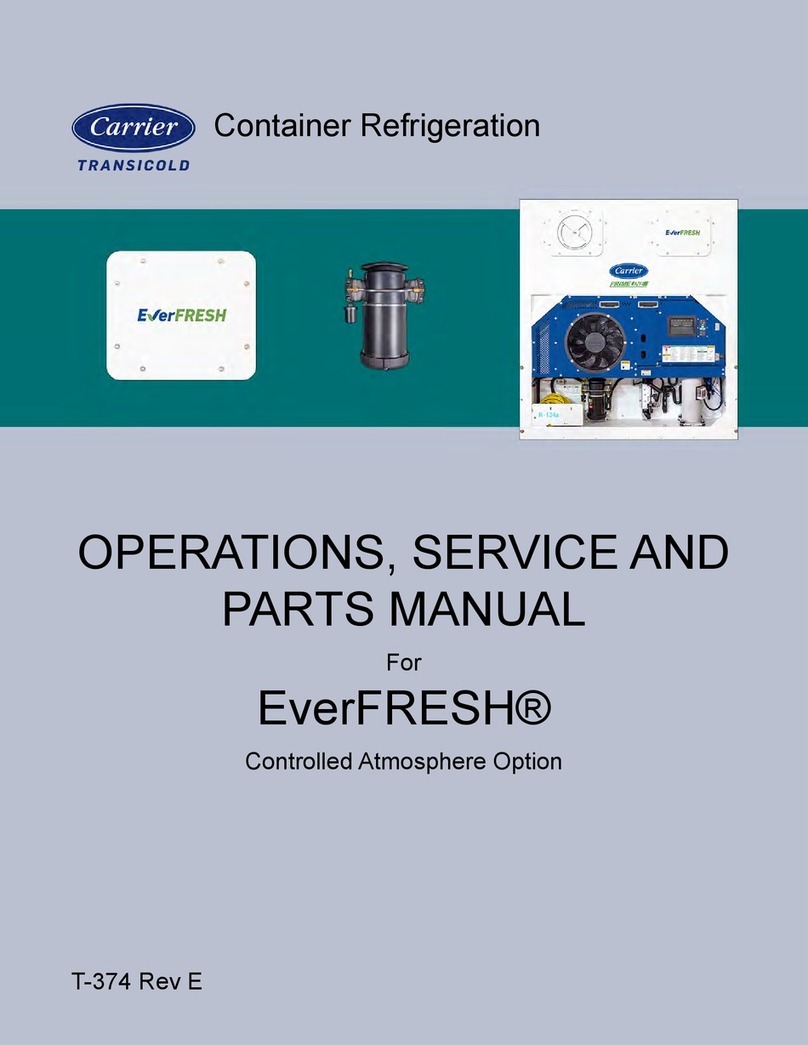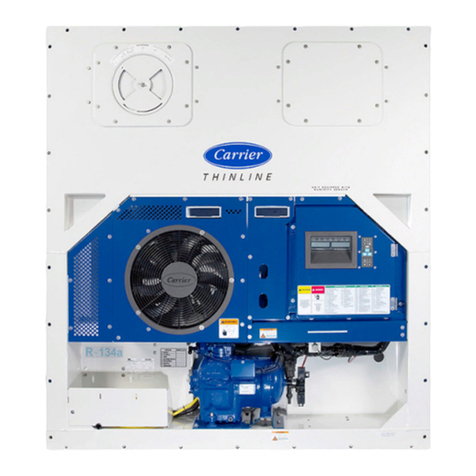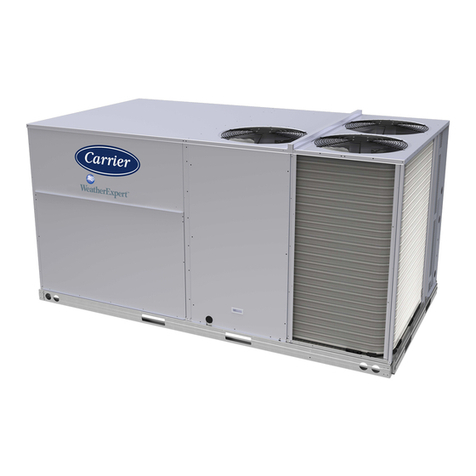
1
336771---752---CBP
336771---756
336771---757
336771---758
336771---759---CBP
336771---761
336771---763
336771---764
Installation Instructions
REPLACEMENT PRIMARY HEAT EXCHANGER KIT
FOR USE WITH 35---IN. (889 mm)
HIGH EFFICIENCY GAS FURNACES
NOTE: Read the entire instruction manual before starting the
installation.SAFETY CONSIDERATIONS
Improper installation, adjustment, alteration, service, maintenance,
or use can cause explosion, fire, electrical shock, or other
conditions which may cause death, personal injury, or property
damage. Consult a qualified installer, service agency, or your
distributor or branch for information or assistance. The qualified
installer or agency must use factory--authorized kits or accessories
when modifying this product. Refer to the individual instructions
packaged with the kits or accessories when installing.
Follow all safety codes. Wear safety glasses, protective clothing,
and work gloves. Have a fire extinguisher available. Read these
instructions thoroughly and follow all warnings or cautions
included in literature and attached to the unit. Consult local
building codes, the current editions of the National Fuel Gas Code
(NFGC) NFPA 54/ANSI Z223.1 and the National Electrical Code
(NEC) NFPA 70.
In Canada, refer to the current editions of the National Standards of
Canada CAN/CSA--B149.1 and .2 Natural Gas and Propane
Installation Codes, and Canadian Electrical Code CSA C22.1.
Recognize safety information. This is the safety--alert symbol !!.
When you see this symbol on the unit and in instructions or
manuals, be alert to the potential for personal injury.
Understand the signal words DANGER,WARNING,and
CAUTION. These words are used with the safety--alert symbol.
DANGER identifies the most serious hazards which will result in
severe personal injury or death. WARNING signifies hazards
which could result in personal injury or death. CAUTION is used
to identify unsafe practices which may result in minor personal
injury or product and property damage. NOTE is used to highlight
suggestions which will result in enhanced installation, reliability, or
operation.
!WARNING
FIRE, EXPLOSION, ELECTRICAL SHOCK
HAZARD
Failure to follow this warning could result in personal injury,
death and/or property damage.
The ability to properly perform maintenance on this equipment
requires certain knowledge, mechanical skills, tools, and
equipment. If you do not possess these, do not attempt to
perform any maintenance on this equipment other than those
procedures recommended in the User’s Manual.
!WARNING
FIRE, EXPLOSION, ELECTRICAL SHOCK AND
CARBON MONOXIDE POISONING HAZARD
Failure to follow this warning could result in personal injury,
death and/or property damage.
Improper installation, adjustment, alteration, service,
maintenance, or use can cause carbon monoxide poisoning,
explosion, fire, electrical shock, other conditions, which could
result in personal injury or death. Consult your distributor or
branch for information or assistance. The qualified installer or
agency must use only factory--authorized kits or accessories
when servicing this product.
!WARNING
ELECTRICAL SHOCK, FIRE OR EXPLOSION HAZARD
Failure to follow this warning could result in personal injury or
death, or property damage.
Before installing, modifying, or servicing system, main electrical
disconnect switch must be in the OFF position and install a
lockout tag. Check accessories and cooling unit for additional
electrical supplies that must be shut off during the furnace
servicing. There may be more than one disconnect switch. Lock
out and tag switch with a suitable warning label. Verify proper
operation after servicing.
CUT HAZARD
Failure to follow this caution may result in personal injury.
Sheet metal parts may have sharp edges or burrs. Use care and
wear appropriate protective clothing and gloves when
handling parts
CAUTION
!
INTRODUCTION
This instruction covers installation of the Replacement Primary
Heat Exchanger Kit, Part No. 336771--752--CBP, --756, --757,
--758, --759--CBP, --761, --763, --764 in 35--in. (889 mm) tall,
condensing gas furnaces. See Table 2 for kit usage.
NOTE: DO NOT use a releasing agent on parts that will be sealed
with RTV.
NOTE: DO NOT substitute any other type of RTV sealant for
those listed below.
The low adhesion sealant used on the Coupling Box cover is
Novaguard RTV 400--900t, P/N PF 680002.
